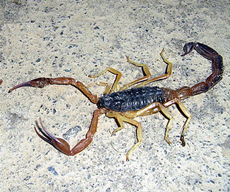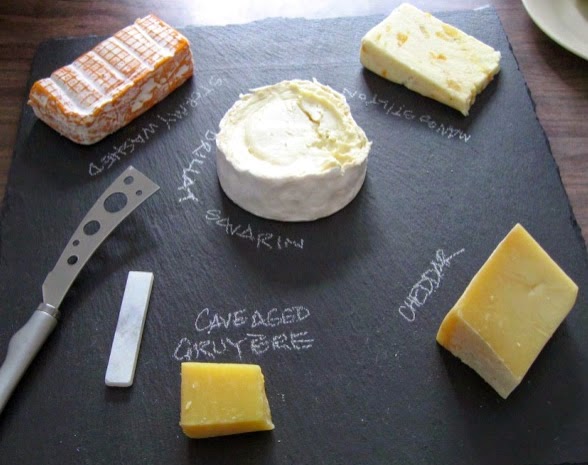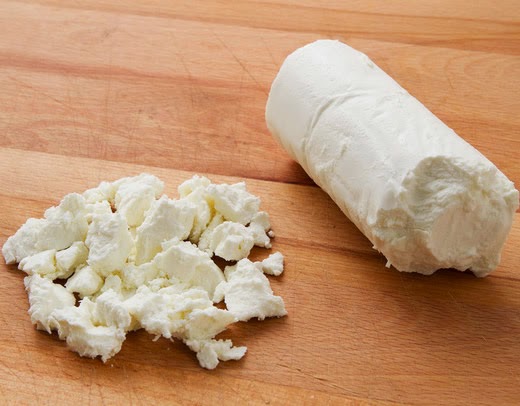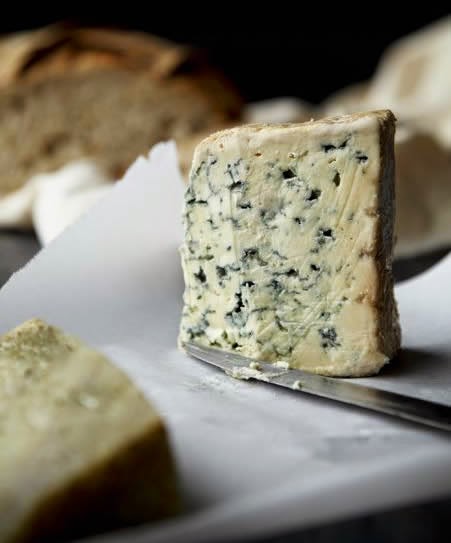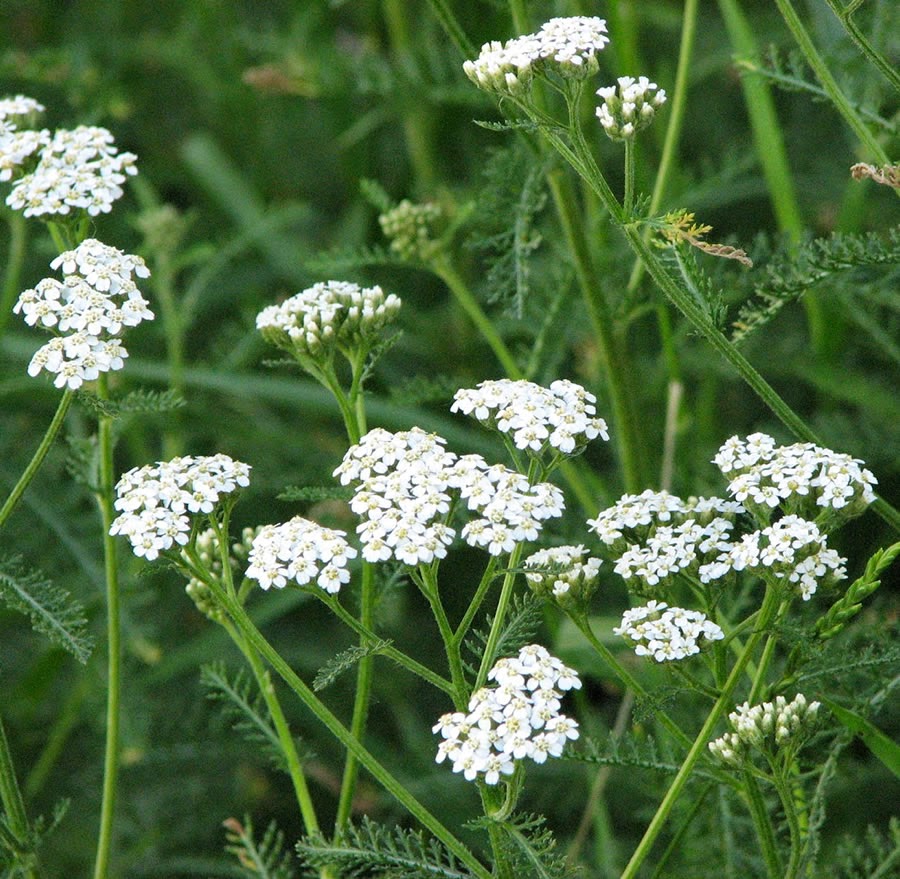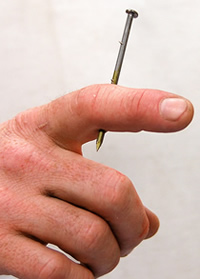Sweeteners
 |
| Sweeteners |
Sweeteners come from various sources. They have been sought throughout history for their pleasing taste and many uses. Just stop and think of what you have eaten today.
This morning you may have sweetened your tea with honey and put maple syrup on your pancakes. At lunch, you may have eaten a snack food made with corn syrup — a form of sugar — and, perhaps, you finished off dinner with a cake made with the most commonly used and best known sweetener of all, granulated sugar.
The science of sweetness, however, goes beyond the source of the foodstuff for the sweetener. At a molecular level, approximately 100 chemicals are sweet. They all are referred to as sugars. Common ones you may have heard of include the following:
  |
Sucrose — Table sugar is the crystallized form of sucrose. Sucrose is referred to as a simple sugar. It is naturally occurring in all plants that depend on sunlight to produce energy. Sugar cane and sugar beets are among the most abundant producers of sucrose in the plant kingdom.
Glucose — A simple sugar that plays many key roles in the body, glucose is a simple sugar found in fruits, honey, cereal, flour, and nuts.
Fructose — The sweetest of all sugars is found in abundance in honey and fruit.
Lactose — Another simple sugar, lactose occurs only in milk. It is often added to other foods during processing to improve taste.
Maltose — The result of a chemical processing that uses starch and malt, maltose has numerous commercial food uses. It is often used in beer, bread, and baby food, among other things.
Pectin — A complex sugar, pectin is found in apples, citrus fruits, and some vegetables. It is a form of fiber.
Nutrition
All sugars are carbohydrates and play a key role in providing the body with energy. The calorie content depends on the type of sweetener used. For example, table sugar has about 16 calories per teaspoon, and honey has about 21 calories per teaspoon.
Generally, sweeteners often are referred to as having “empty calories.” They contain few or no vitamins, minerals, or other nutrients. And, because they are appealing, it can be easy to eat too much. This excess could make it difficult to maintain a healthy weight.
Heavy use of sweeteners also may increase the risk of tooth decay, which is why it is important to brush after eating a sweet food, particularly one that is sticky, such as caramel. For these reasons, it is best to minimize the amount of sweeteners in your diet.
Selection and Storage
These factors depend on the type of sweetener. Check the following sections, which provide more information on common types of sweeteners, for specifics.
Sugar
 |
| sugar |
Sugar was once considered as valuable as gold because of its scarcity. Its use spread throughout the Western world after explorers, then armies, conquered parts of ancient Arabia. In early times, it was sold and traded in blocks, which were then ground into powder.
Although sugar is a carbohydrate that occurs naturally in every fruit and vegetable, it is found in the greatest quantities as sucrose in sugar cane, which is grown in the tropics, and sugar beets, which can be cultivated in colder climates. Juice extracted from the crushed cane or sliced
beets is then processed to make sugar.
Typically, the juice is boiled, and then chemicals are added to the solution to purify it. The resulting syrup is known as molasses. Continued processing separates crystals from the molasses and other by-products. The crystals are then dried and packaged as sugar.
The most common types of sugars found in supermarkets are as follows:
- Granulated white sugar — Often referred to as table sugar, this is the most commonly used type of sugar. There are different grades of granulated white sugar, and the size of the sugar crystal determines how it is used. Regular, extra-fine, or fine sugar is the sugar found most commonly in the sugar bowl and called for in most cookbook recipes. Superfine sugar or ultrafine sugar has the smallest crystal size and is often used in cakes and meringues and to sweeten fruits or iced drinks. Superfine sugar dissolves the most easily in water.
- Brown sugar — Brown sugar is sold in dark and light varieties. It is simply white sugar crystals coated in a molasses syrup to add a natural mellow flavor and color. Dark brown sugar has more color and a stronger molasses flavor. Its fuller flavor is called for in recipes for gingerbread and baked beans. Lighter types are usually used in baking. Neither type of brown sugar is considered raw sugar, although they do look similar to it.
- Confectioners’ sugar — Also known as powdered sugar, this is granulated sugar that has been ground into a powder. A small amount of cornstarch can be added to prevent clumping. Confectioners’ sugar typically is used to make icing, in whipping cream, and as a topping for desserts.
- Decorating or coarse sugar — Also called sugar crystals, decorating sugar has granules about four times larger than those of regular granulated sugar. It undergoes a special processing method to make it resistant to color change and breakdown at high temperatures. This makes it useful for making fondants or liqueurs.
- Sanding sugar — Also called colored sugar, sanding sugar is used for decorating and is characterized by large crystals. This is desirable in decorating because it gives the food a sparkling appearance.
- Flavored sugar — This is simply granulated sugar that has been combined or scented with various ingredients such as cinnamon or vanilla.
- Fruit sugar — Slightly finer than “regular” sugar, fruit sugar is used in dry mixes such as gelatin desserts, pudding mixes, and drink mixes. The more uniform crystals prevent separation or settling of smaller crystals to the bottom of the box.
In addition to sweetening items, sugar plays an important role in making food. It is a critical ingredient in bread, in which it provides food for yeast and thus helps bread to rise. It also adds to the flavor and crust color of baked goods and helps extend shelf life.
 |
| Granulated white sugar |
In large amounts, sugar inhibits the growth of yeast and molds in jams and jellies. Sugar syrups protect frozen and canned foods from browning and withering.
In ice cream, beverages, baked goods, and other products, sugar adds bulk, texture, and body. It is also used in many condiments, such as ketchup and salad dressing, where it blends flavors, reduces acidity, and helps create a smooth texture.
Sugar has a long shelf life. Kept tightly wrapped and in a cool, dark place, it will keep for months or even years.
Preparation Tips: Sugar adds flavor and calories but little else. Therefore, it is best for most of us to minimize its role in our diet. Make a little go a long way. To do so:
- Add spices, such as cinnamon or nutmeg, to foods to jazz up flavor while reducing sweeteners used in them.
- Add fruit or yogurt to foods such as cereal, instead of a sweetener.
- Avoid sweetened soft drinks, and minimize fruit juices with added sugar. Better yet, drink water.
- Check labels for sugar or any one of the chemical names for it: glucose, sucrose, lactose, or fructose, to name just a few. Also, watch for corn syrup or malt syrup, two more widely used sweeteners in food manufacturing.
Serving Suggestions: Manufacturers can reduce the fat in many foods, but it is hard to do without sugar. Sugar is a key component of baked goods and desserts and is used to enhance the flavor of everything from sweet-and-sour stir-fry to ham. The amount of sugar used in a recipe often can be reduced by up to half without compromising the flavor. However, this is not always the case, so a bit of trial and error is required.
Honey
 |
| Honey |
In ancient times, this thick, sweet, golden liquid was thought of as a healing agent, a gift from the gods, and a symbol of wealth. Today, this sweetener is still revered, although not as highly, for being a natural source of sweet flavor.
Honey is made by bees. The basic ingredient is nectar gathered from flowers. Enzymes in the bee’s saliva convert the nectar into honey. Essentially, this is a simple matter of chemistry, in which the sugar (sucrose) in nectar is converted into fructose and glucose.
As the phrase “busy as a bee” suggests, bees work hard to make honey. The bee must make up to 100,000 round trips from hive to flower and back just to make a quart of honey.
Honey is divided into three basic categories:
- Liquid honey, which is extracted from the comb
- Chunk-style honey, a liquid honey with pieces of the honeycomb
- Comb honey, a square or round piece of the honeycomb, with the honey inside
Within these three categories are hundreds of different types of honey. Honey’s color ranges from light to dark. The flavor ranges from mild to strong and depends on the type of flower from which the nectar was taken. In general, the darker the honey, the stronger the flavor.
One tablespoon of honey has about 64 calories. Although sugar has about 48 calories per tablespoon, honey does have some advantages over sugar. Its sweetening power is stronger. And honey, unlike other sweeteners, does contain trace amounts of vitamins and minerals.
If kept in a sealed container and a cool dark place, honey can be kept for a long time. Cooler temperatures, such as in a refrigerator, may cause honey to thicken. Warming it up, however, restores honey’s appearance. Its taste is not altered. However, very warm temperatures can change honey’s flavor.
Preparation Tips: Most honey sold in stores is pasteurized, filtered, and blended. Some cooks buy honey directly from an apiary because they believe that these processes alter or dull honey’s delicate flavor.
Honey also can be used as a substitute for sugar (about 1/2 cup honey for 1 cup of sugar) in many recipes. Keep in mind, however, that honey may cause food to brown more quickly. In addition, you will need to reduce the liquid in the recipe.
Serving Suggestions: Honey adds moisture to cakes, breads, and other confections. It is also an excellent topping for most baked goods. One other common use is as a glaze for meats such as ham.
Syrups
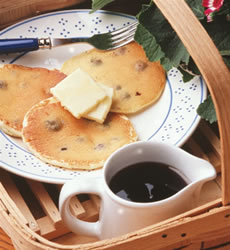 |
| syrups |
- Cane syrup — Thick and extremely sweet, cane syrup is made from sugar cane. It is a common ingredient in Caribbean and Creole recipes.
- Grain syrups — Sweet syrups can be made from several grains: barley, wheat, corn, or rice. They are not as sweet as sugar but are commonly used in food manufacturing because they do not readily form crystals. Corn syrup is perhaps the most widely used grain syrup. It is made by processing corn starch and is available in light and dark forms. Malt syrup, made from evaporated corn mash and sprouted barley, is another common grain syrup. It has a strong flavor and is used in bread making.
- Golden syrup — Popular in England, golden syrup is similar in consistency to corn syrup and has a golden color. It is made from sugar cane juice and has a toasted flavor. It is also known as light treacle.
- Maple syrup — The best known of all syrups, maple syrup is made by boiling the sap of certain species of maple trees (Acer saccharum) found mainly in Quebec, New York, and Vermont. This clear, subtly flavored syrup is sweeter than sugar and has a distinctive flavor.
- Molasses — Molasses, a dark viscous syrup, is a by-product of the sugar-making process and is generally used for flavoring foods or as a glaze. It is poured over foods as a condiment in some regions of the United States. Light molasses is produced during the first stages of the sugar-extraction process. Dark molasses is made during the second stage and is referred to as unsulfured molasses. Blackstrap molasses, made during the selesai stage of sugar production, is darkly colored and has an intense flavor.
- Black treacle — Black treacle is a thick, black, and sticky syrup. It is very similar to molasses and is a by-product of the sugar-production process. Black treacle is sweeter than molasses. A lighter-colored and lighter-flavored form is also available. Both are more common in England.
- Palm syrup — This dark, thick, and intensely flavored syrup is made from palms. It is an ingredient in some Asian recipes and usually is sold only at specialty markets.
Preparation Tips: Most grain syrups are used commercially. In contrast, maple syrup is typically used at home. Pure maple syrup is found in supermarkets.
However, pancake syrups commonly contain either a small portion of maple syrup or maple flavoring that is then mixed with a grain syrup. Many types of syrups are used to make candy. Keep in mind that syrups high in sugar have a higher boiling point than water.
Serving Suggestions: Maple syrup is typically used as a topping for waffles and pancakes. Numerous types of syrups can be used as glazes for meats (ham, in particular, and also poultry or fish) or on top of vegetables, such as carrots. Molasses also makes an excellent glaze.
Sugar syrups make an excellent glaze for pound cakes and bundt cakes.
Chocolate
 |
| chocolate |
Chocolate is made from the beans of the cacao tree, which grows in the warm, humid weather of the equatorial regions. Like coffee beans, the beans of the cacao tree must be dried, chopped, and roasted before use.
The processing of the beans results in a dark brown liquid called chocolate liquor. This fluid — which is 55 percent fat, 17 percent carbohydrate, and 11 percent protein — is used to make virtually all types of chocolate.
Different types of chocolate contain varying amounts of cocoa butter — a vegetable fat derived from the cacao bean — and solids from the cacao bean.
Chocolate types include the following:
- Unsweetened — Sometimes referred to as baker’s chocolate, this dark, rich, and bitter chocolate does not have any sugar added to it. It is usually added to recipes in which sugar is an ingredient.
- Bittersweet — This dark, rich chocolate is comprised mostly of chocolate liquor, meaning it is rich in cacao solids, but it may have some milk solids and other flavorings added to it.
- Semisweet — A favorite of makers of chocolate chip cookies, semisweet chocolate contains more milk solids and other flavorings than bittersweet chocolate.
- Milk — The sweetest of all chocolates, milk chocolate has a light-brown color and a mild chocolate flavor.
- White — This ivory-colored chocolate contains no cacao bean solids, but it does contain cocoa butter, which gives it a rich, creamy mouth-feel. It differs from white almond bark or candy coating, which uses vegetable fat as a base instead of cocoa butter.
- Imitation chocolate — Typically used in baking chips, imitation chocolate replaces some or all of the cocoa fat with other vegetable fats. It is high in fat (mostly saturated fat) and does contain caffeine.
Cocoa is another common type of chocolate. It is a powdered form of chocolate made from chocolate liquor. However, all cocoa butter has been removed from it.
A tablespoon of unsweetened cocoa powder contains about 15 calories and just under 1 gram of fat.
Cocoa typically is not sweetened and is added to recipes in which sugar is used. There are two main types of cocoa: natural and “Dutch-process.” Natural cocoa is light in color and has a strong chocolate flavor. In contrast, Dutch-process has a milder taste but is darker in color.
Chocolate’s nutritional value varies. One ounce of unsweetened chocolate has 145 calories, 16 grams of fat, and 9 grams of saturated fat. In comparison, an ounce of semisweet chocolate has 135 calories, 9 grams of fat, and 5 grams of saturated fat. Chocolate also is a source of protein and contains trace amounts of vitamins and some minerals, such as potassium.
Chocolate should be stored in a cool, dark place and can be kept for several months. Dark chocolate can be stored for up to a year. Varying temperatures will cause lighter, whitish areas to appear on chocolate — something that does not affect taste and is resolved when the chocolate is melted. Chocolate also can be frozen, but it must be wrapped tightly to prevent moisture from damaging the chocolate when it is thawed.
Preparation Tips: Cocoa can be used as a substitute for chocolate in recipes. However, when this substitution is made, fat needs to be added to the cocoa to ensure that the selesai product will be moist. Each square of unsweetened chocolate can be replaced with 3 table-spoons of cocoa and 1 tablespoon of cooking oil.
Melting chocolate is difficult because it burns easily. For that reason, it is best to use a double boiler to melt chocolate. Avoid splashing any water into the melting chocolate because doing so can cause the chocolate to become hard and thus unusable. Chopping the chocolate into small bits before melting it helps achieve the smooth, even consistency that many recipes require.
Always look at the ingredient list of the chocolate you buy to ensure that you are not getting a substitute.
Serving Suggestions: Chocolate is the classic dessert ingredient, providing the flavoring power for cakes, tortes, frostings, mousses, creams, and other sweets too numerous to count.
Chocolate’s high fat content and high calories mean it should be used in moderation. Use chocolate as an accent to a healthier food — such as a dip for strawberries — rather than as the main ingredient. Reduced-calorie hot cocoa mixes are an excellent way to feed a chocolate craving without the fat and calories. Or, simply save chocolate for special occasions.
| Top 10 natural sweeteners |



